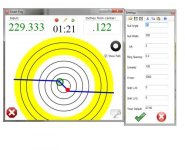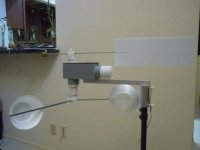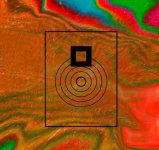"When NOT to Shoot"
Well .I have been looking at wind flags for about 14 years now. I can say ,without reservation,that I don't need a Probe to tell me when NOT to shoot. My flags tell me when NOT to shoot,I just don't believe them. I am convinced that sometimes my flags just plain lie. Over the years,I have become what I call "Flag dependent" That is, I try to watch my flags as close as my 70 year old eyes will allow. Sometimes the bullets just don't go where my flags say they should. Something keeps telling me that there is a,yet to be discovered, wind flag out there that is 100% reliable. I'm still searching.
I have watched probes at registered matches,but I am not convinced that the ones I've observed offer any advantage over the traditional style flag. Maybe I just don't know what to look for.
Since I currently have this( new to me) probe design in my possession.I welcome any suggestions on how to take advantage of the technology. (The original purpose of my post)
Over the years I have observed Jerry Hensler using high tech wind reading devices that he designed. They all seem to work. I call him the wind flag guru. It's good to know that somebody is working behind the scene, in efforts to help us get a handle on reading the wind. Thanks Jerry.
Glenn
Well .I have been looking at wind flags for about 14 years now. I can say ,without reservation,that I don't need a Probe to tell me when NOT to shoot. My flags tell me when NOT to shoot,I just don't believe them. I am convinced that sometimes my flags just plain lie. Over the years,I have become what I call "Flag dependent" That is, I try to watch my flags as close as my 70 year old eyes will allow. Sometimes the bullets just don't go where my flags say they should. Something keeps telling me that there is a,yet to be discovered, wind flag out there that is 100% reliable. I'm still searching.
I have watched probes at registered matches,but I am not convinced that the ones I've observed offer any advantage over the traditional style flag. Maybe I just don't know what to look for.
Since I currently have this( new to me) probe design in my possession.I welcome any suggestions on how to take advantage of the technology. (The original purpose of my post)
Over the years I have observed Jerry Hensler using high tech wind reading devices that he designed. They all seem to work. I call him the wind flag guru. It's good to know that somebody is working behind the scene, in efforts to help us get a handle on reading the wind. Thanks Jerry.
Glenn




